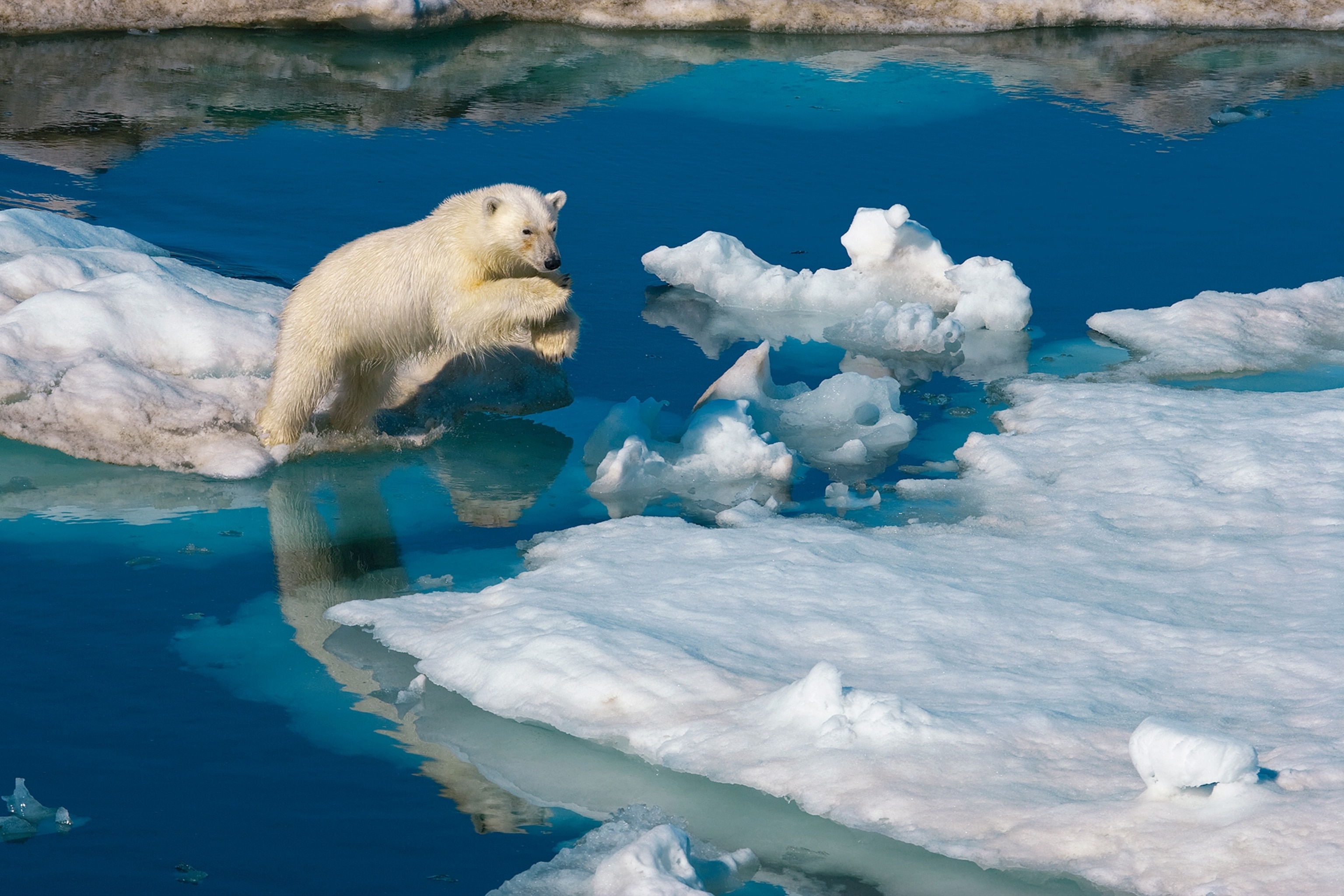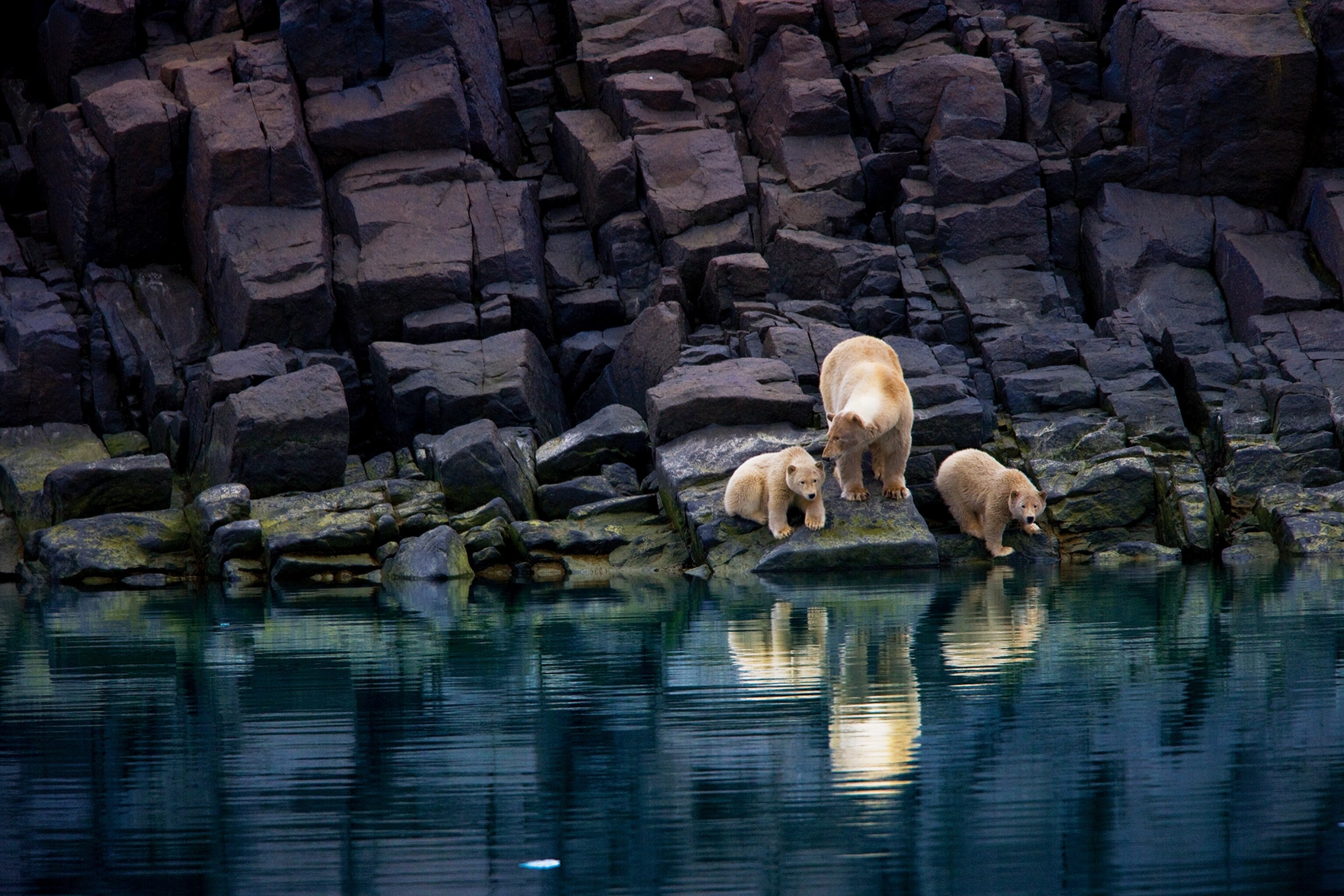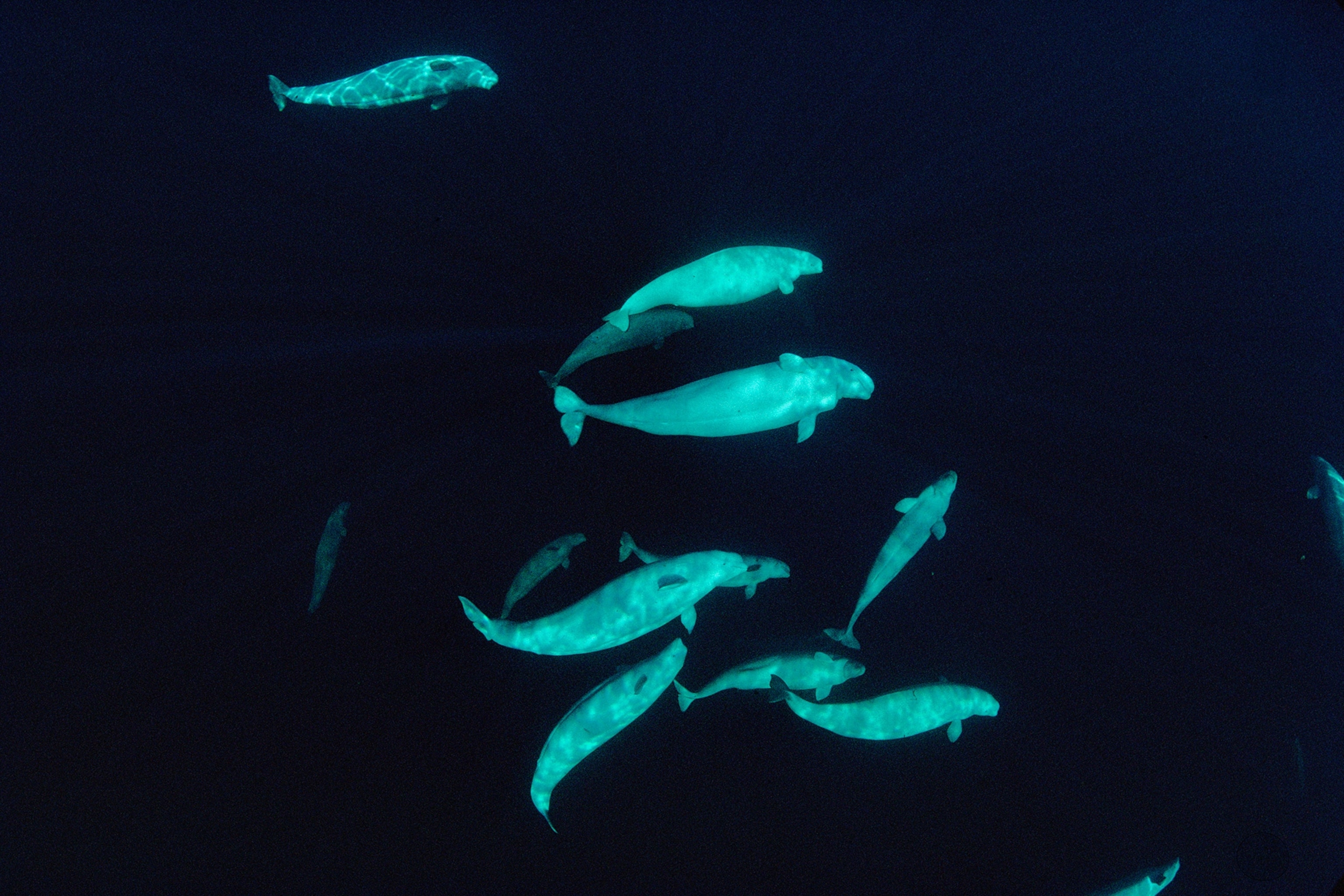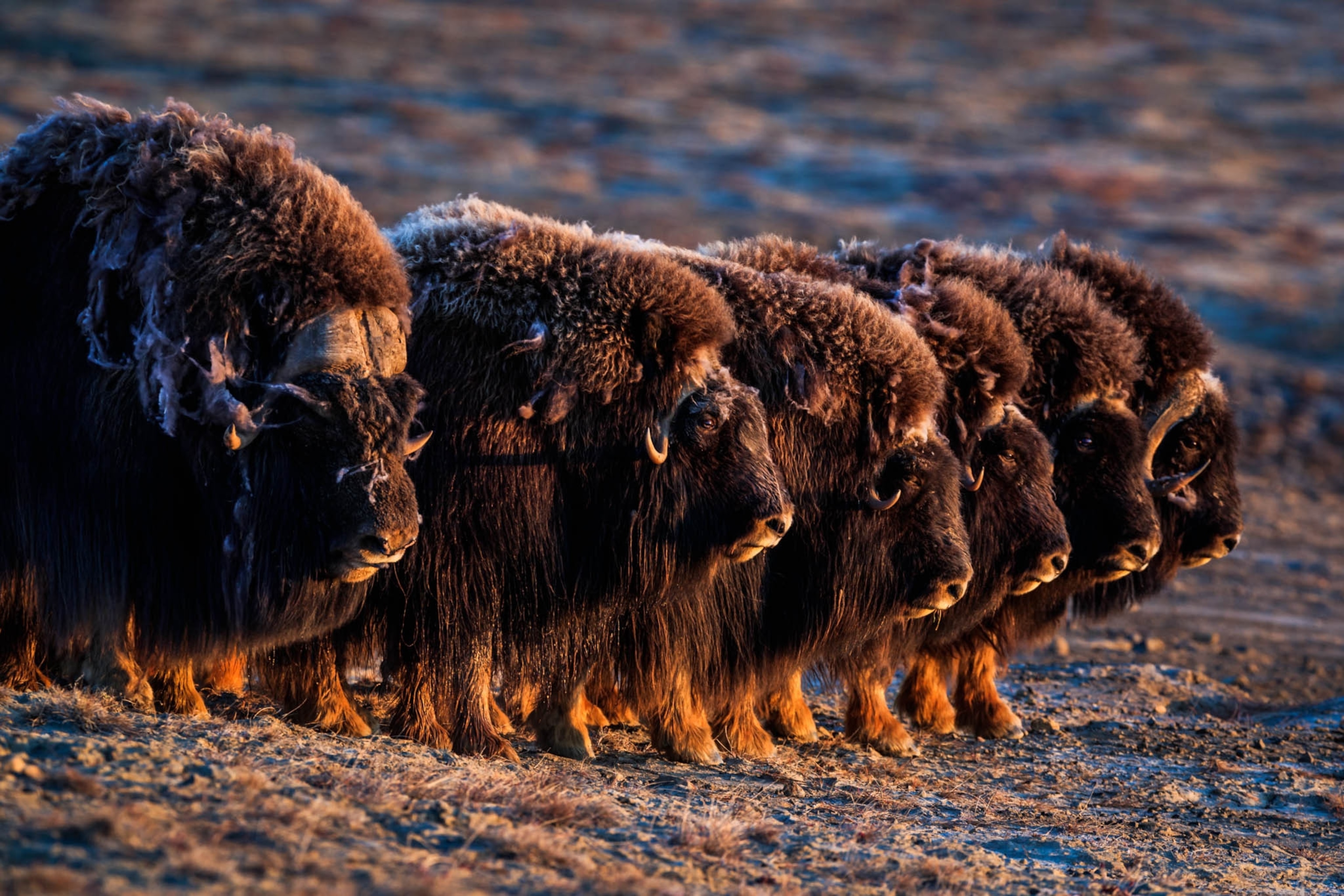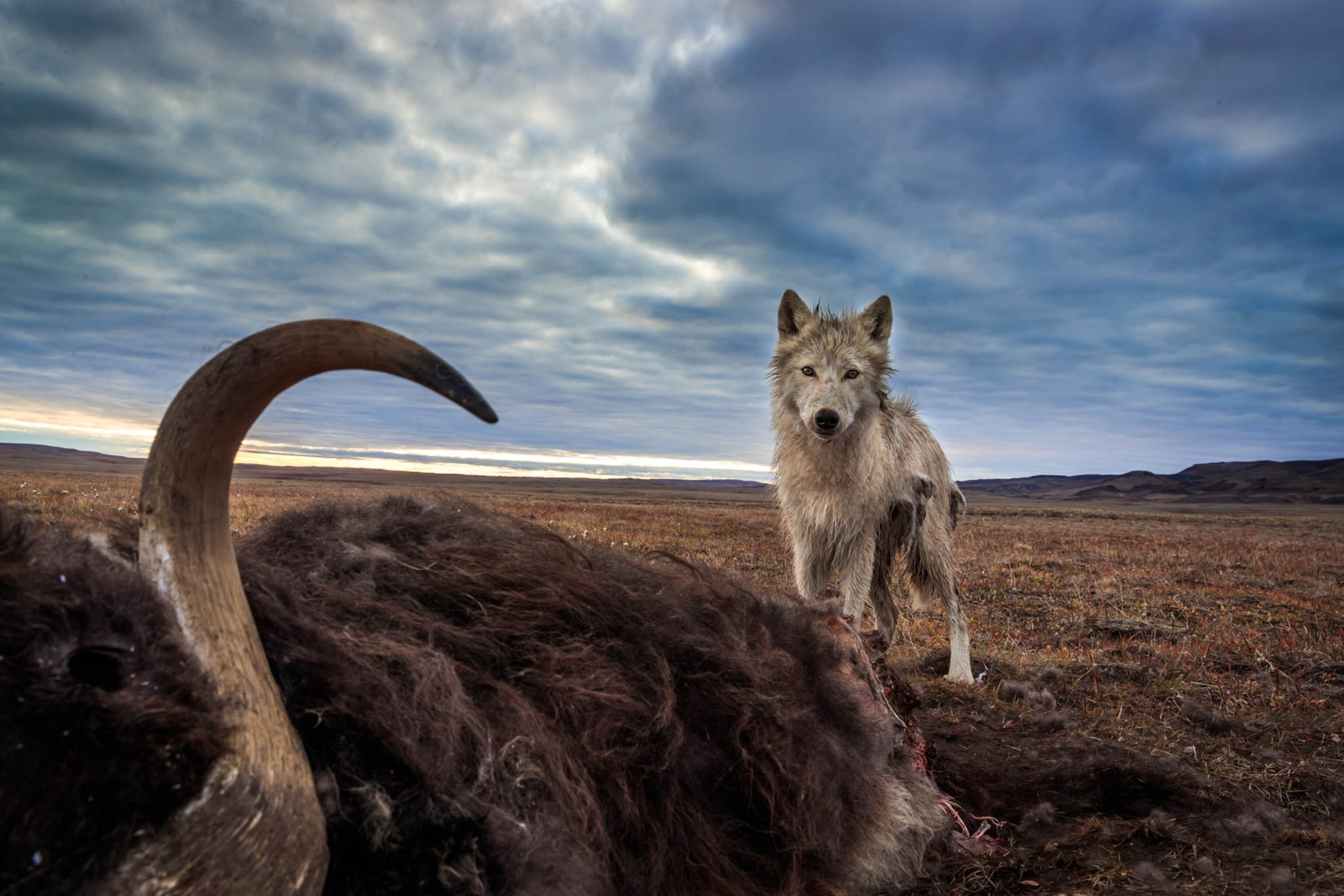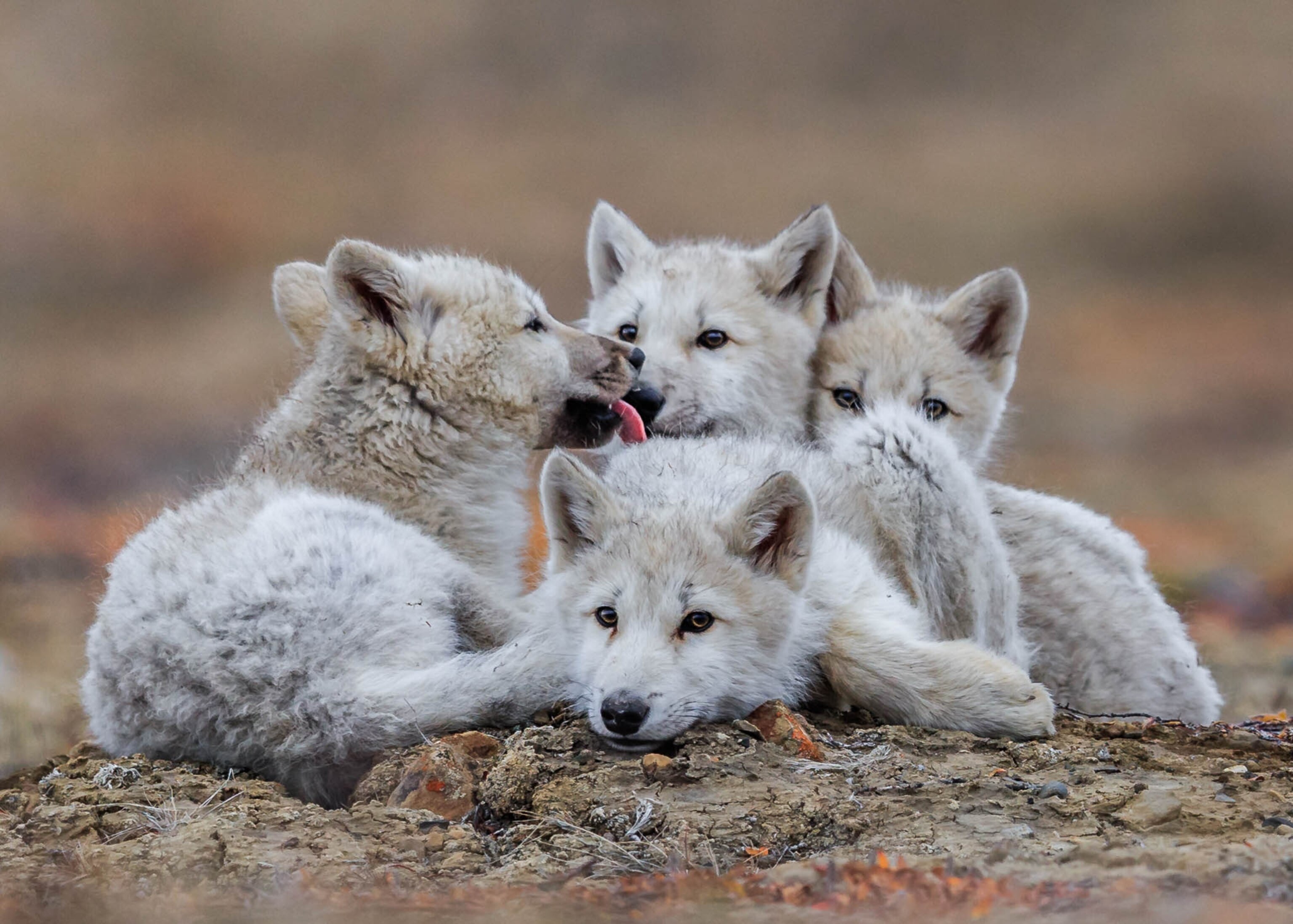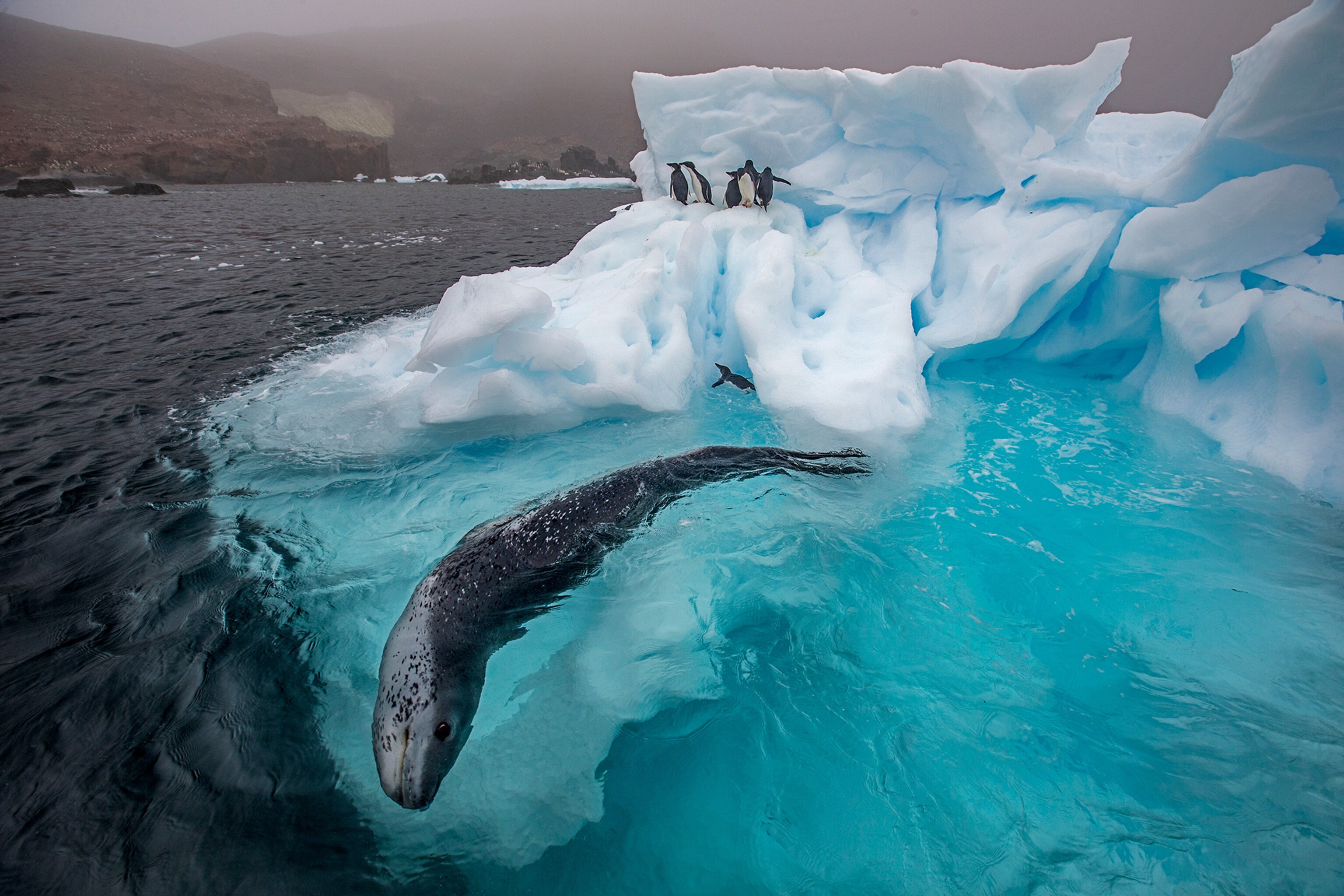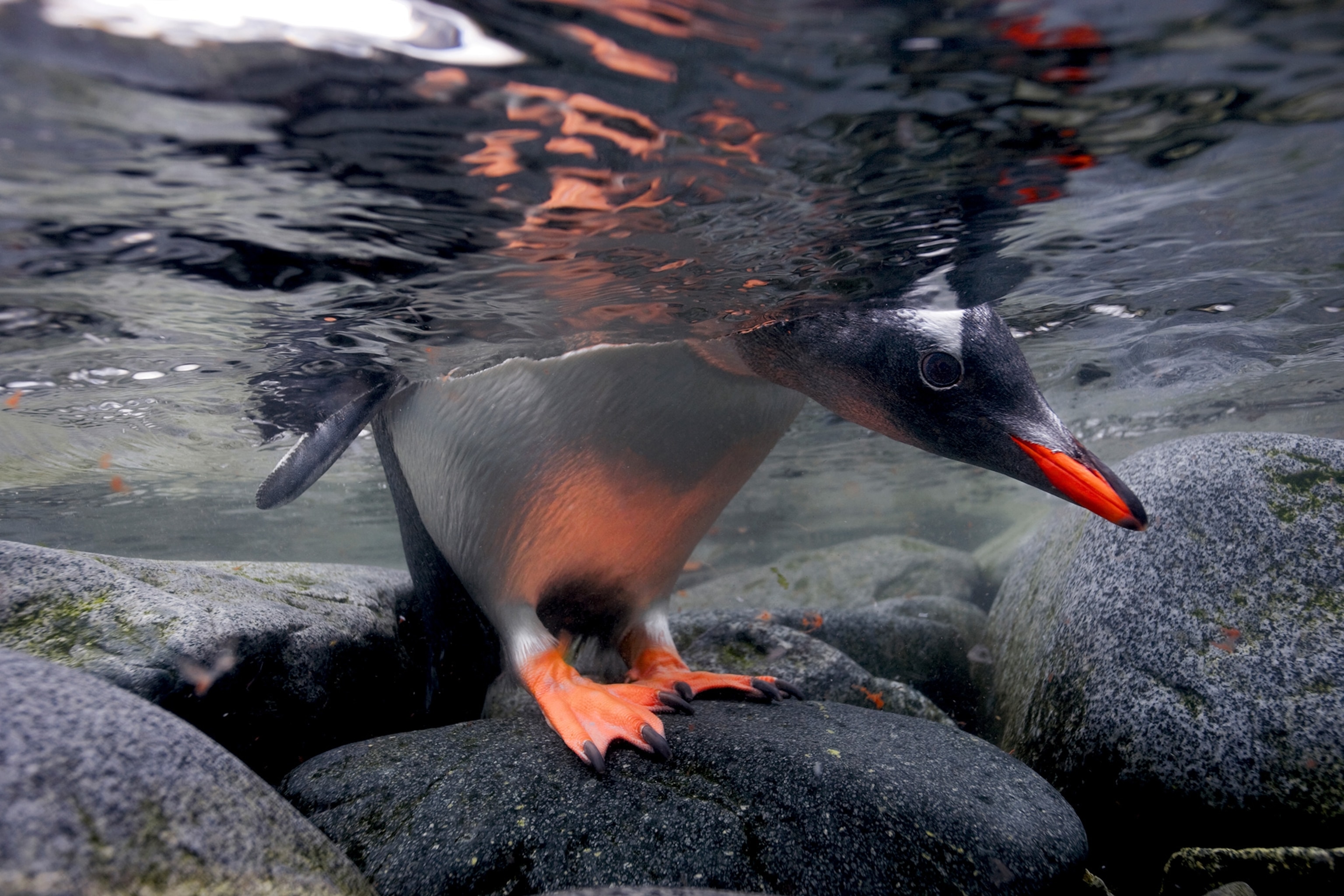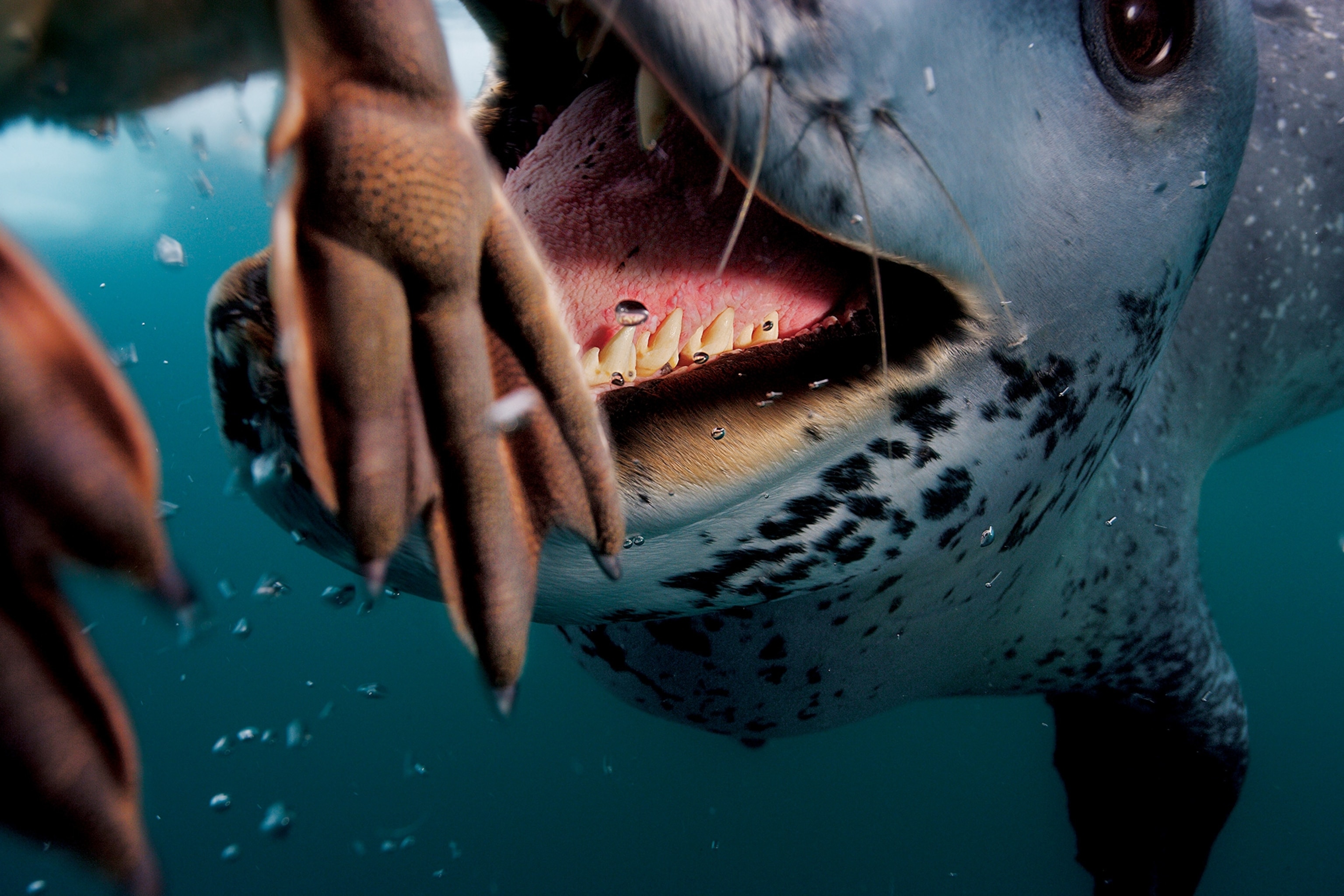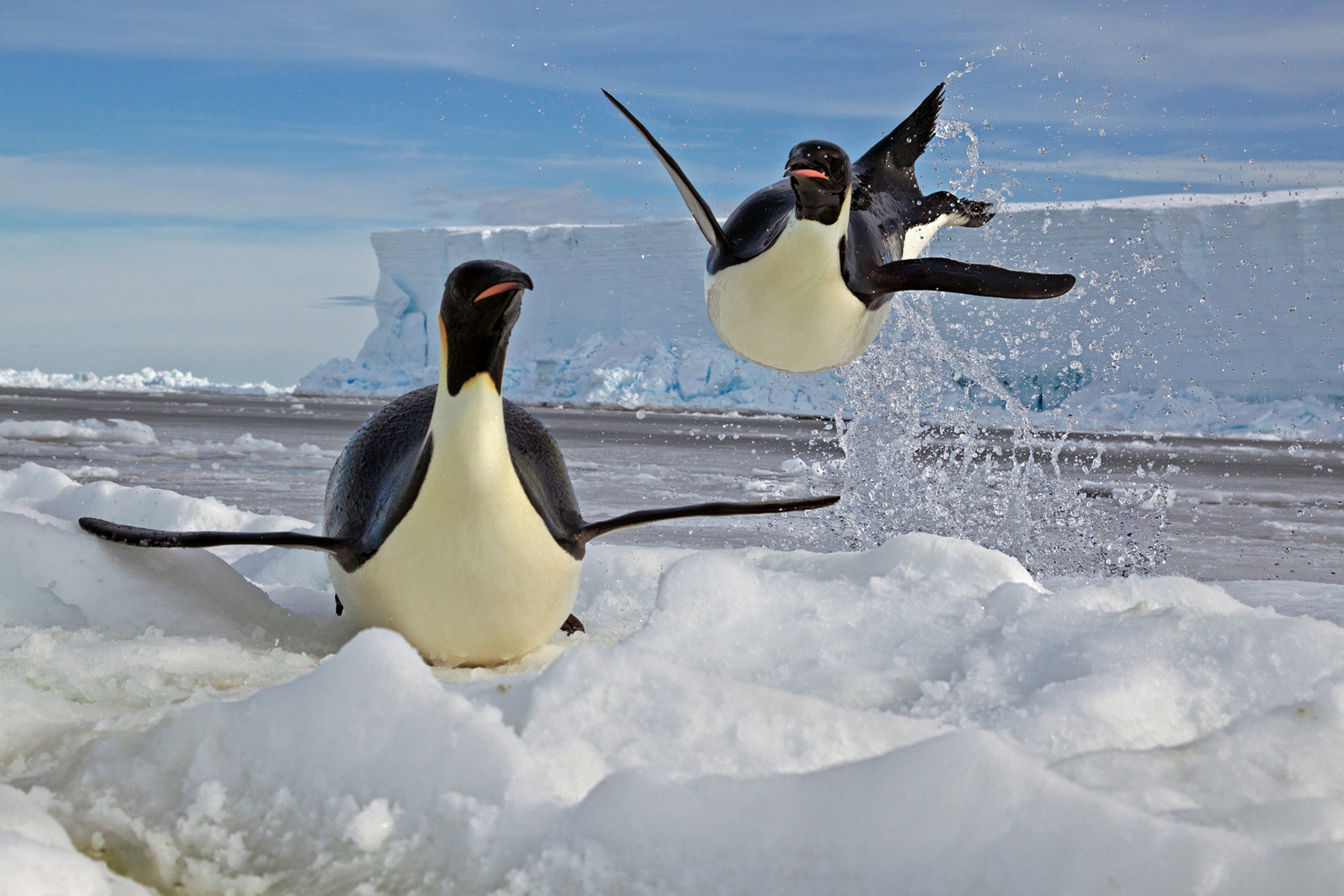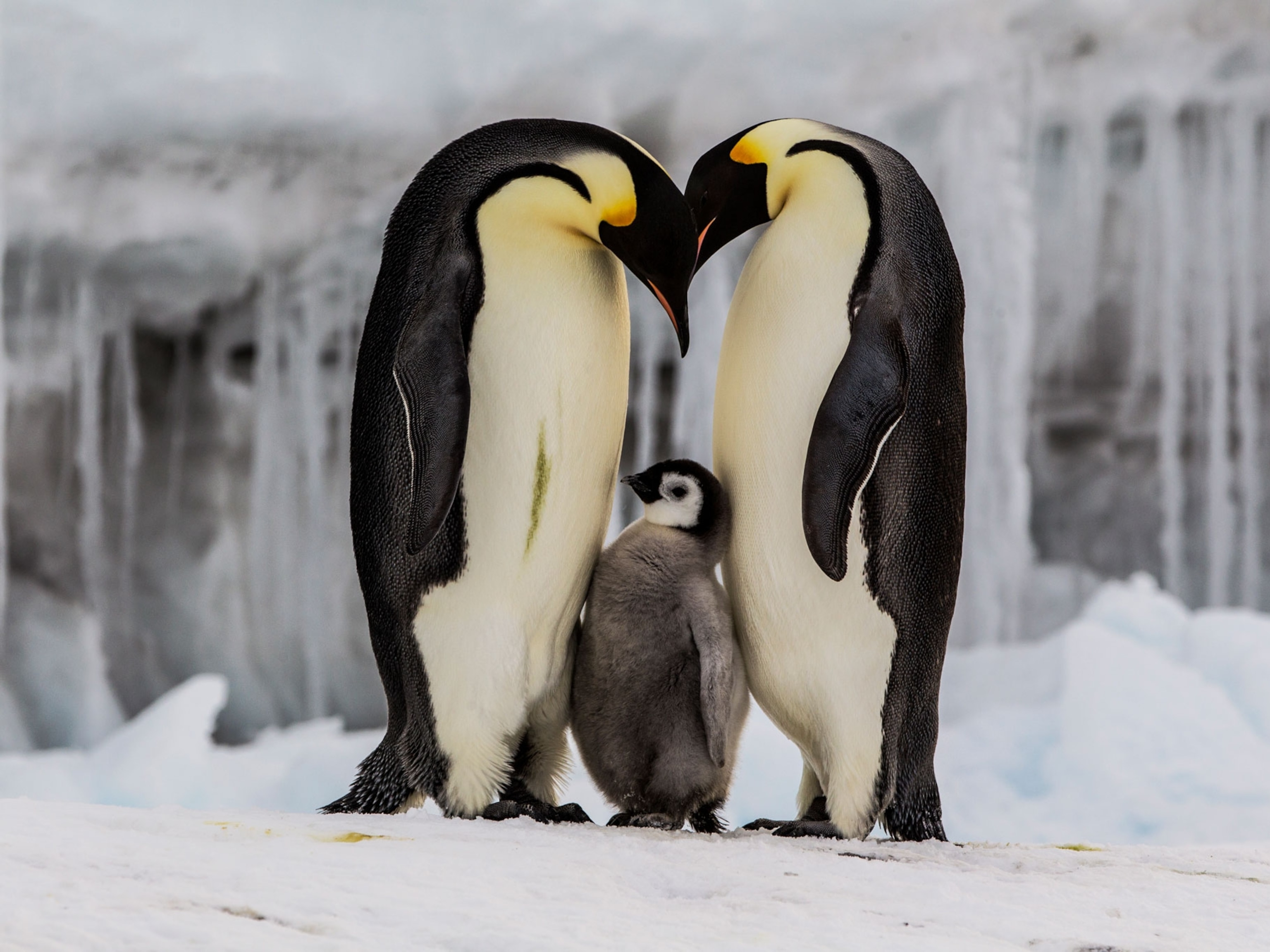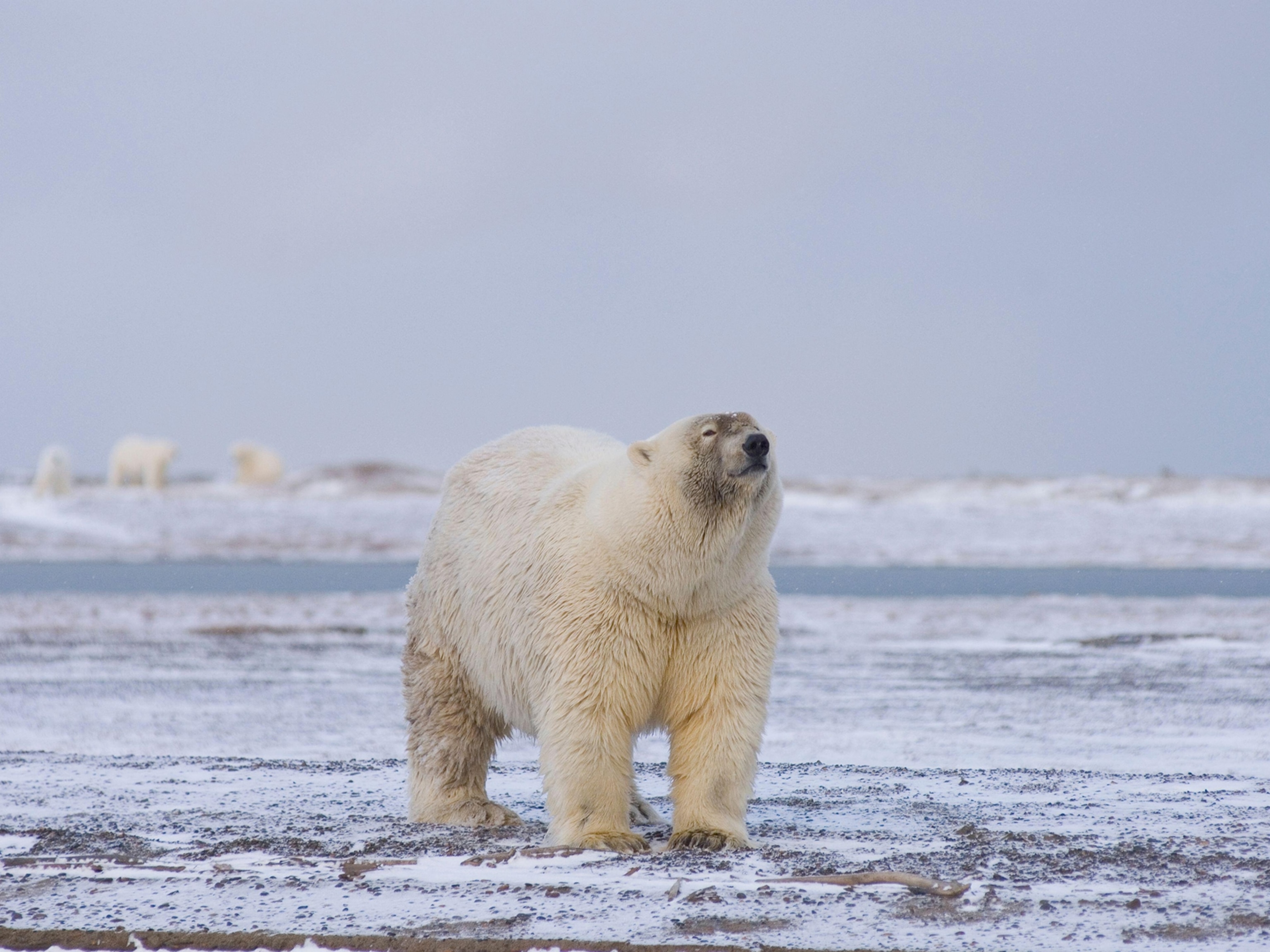Photos show how polar animals live in the coldest places on Earth
To thrive, these species rely on the cold. The warmer it gets, the tougher life becomes.
Emperor penguins are extremely good at staying warm in the frigid Antarctic winter. Their tight group huddles, which can include several hundred birds, are so effective at conserving heat that penguins can’t stay huddled for long—It gets too hot. Scientists discovered in 2015 that temperatures in the middle of the group can reach 100 degrees Fahrenheit.
(5 Weirdest Antarctic Species)
Emperor penguins are the only animals that breed during the Antarctic winter. They travel inland, often 50 to 100 miles, to mate and lay a single egg. While the male incubates the egg for about two months, the female travels back to the ice edge to feed. It’s a system that works like clockwork—as long as the conditions are right.
Even though emperor penguins are adept at navigating the barren Antarctic landscape, and at keeping themselves warm when temperatures fluctuate, they do need consistency, even within such an extreme environment.
(Antarctica's "Ghost" Mountains Explained)
Having just the right amount of sea ice in their habitat is crucial. A 2014 study by the Woods Hole Oceanographic Institution reveals that too much sea ice means the penguins have to travel farther to feed themselves and their young, threatening the babies’ likelihood of survival. Too little sea ice means that there is less food to eat altogether—and less protection from predators.
(The biomimicry innovations inspired by Earth’s colder climes)
It’s the loss of sea ice that poses the biggest threat to emperor penguins. As water gets warmer and ice melts due to climate change, emperor penguins face the prospect of a steep population decline. The study concludes that by 2100, many colonies will be half the size they are now.
Sea ice loss isn’t just occurring in Antarctica, and penguins aren’t the only animals suffering the consequences. For the polar animals that have evolved to thrive in the coldest places on Earth, keeping those places cold is crucial.
Since the 1980s, the Arctic has lost more than a million square miles of sea ice, an area the size of Alaska, Texas, and California combined. As a result, polar bears, like penguins, struggle to find food. Walruses, which give birth on sea ice edge, have been forced to crowd together ashore as ice disappears, putting calves at risk of being trampled.
As the planet warms, polar species struggle to hold onto the cold. While climate change affects animals in every habitat on Earth, it’s at the poles where it may manifest most dramatically, as entire icy habitats vanish into the ocean.
Here are photos of eleven animals who thrive in freezing temperatures.

